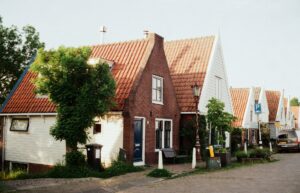Integrated Urban Renewal In The Netherlands
Introduction:
Urban renewal policies in The Netherlands already have a long history, which is characterized by varying attention for either smaller-scale (neighbourhood) or larger-scale (city) issues, and for either physical, social or economic questions. These variations run parallel with more general discourses on urban dynamics and perceptions of processes in (urban) society at large. In this paper the recent history of urban renewal policies will be briefly sketched, including their main orientations.
Recent Big Cities Policies, currently in the third generation, will receive special attention and the actual policy discourse will be critically evaluated and confronted with some essential empirical findings. In this process, the Dutch policy on integrated urban renewal shows clear parallels with the experience in other Western European countries, demonstrating that a Western European paradigm of urban policies is in the making: integrated, area-based, with involvement of both public and market partners and residents.

Nevertheless, the Dutch case is more outspoken than the approaches in other Western European countries, by paying more attention to the issue of social cohesion or integration and to the promotion of social mix as a solution for a lack of social cohesion in neighbourhoods. At the same time it is clear that this new paradigm of urban policies shows the characteristics of a discourse that is not based on research and on empirical facts, but that develops its own momentum from shared beliefs regarding the nature of urban problems and the appropriate policy responses. This new paradigm needs reconsideration.
Urban problem definitions and urban renewal policy responses:
The Netherlands has a long history of developing urban policies to address urban problems. Most, if not all, of the attention paid to urban issues has been characterised by its area-based approach. In general, one could say that after a phase in which Central Business District (CBD) formation was regarded to be of crucial importance, attention has especially been focused on three types of approach: physical urban renewal and renovations; policies with a focus on economic questions and the city; and approaches in which social problems were of central importance, recently typically collected under two labels: first, ‘social exclusion problems’, and second, ‘integration problems’.
Integration of ‘pillars’:
The specially appointed Minister of Big Cities Policies enhanced urban policy by supporting horizontal coordination between different policy areas, which is essential to the integrated approach. He also facilitated cooperation between levels of government in The Netherlands and Europe. His tasks focused on urban issues. As was mentioned before, urban policy rested on three pillars, an economic, a physical and a social pillar.
Area-based approach:
The initiatives are aimed at integrating a range of interventions at a certain spatial scale. From that perspective it seems to make sense that integrated policies are being developed as area-based policies. This requires proper analyses to determine which areas should be targeted.
Decentralized approach:
Although a special Minister for Urban and Integration Policy was appointed until 2002, and a Minister for Housing, Neighbourhoods and Integration from 2007 onwards, this was not meant to express a preference for centralized governance. The special minister was established mainly in order to emphasize the importance of urban policy and maximize its effectiveness within central government. At central government level a structure was in place from 1994 onwards that supported the coordinating function of the Minister and the necessary coordination between and within the three pillars.
Evaluation of recent policies:
In short, the constant elements of recent urban renewal or urban restructuring policies in The Netherlands are its formula of targeting urban social issues through integrated area based policies in a selected number of neighbourhoods in a selected number of cities in The Netherlands. These policies have been criticised in national debates and in international evaluations. ‘Integrated policies’ sounds good, but in reality it remains to be seen how integrated these policies are. Initially, Dutch urban ‘integrated’ policies were highly focused on physical interventions in particular
A Western European paradigm of urban renewal policies:
The picture, sketched above, of the Dutch experience with urban renewal policies in the last decades automatically poses the question to what extent the Dutch case is unique compared to other, neighbouring, countries. The answer is that the Dutch case resembles the experience in other Western European countries, but may be slightly more pronounced.
Based on EU-funded research on urban policies since the mid-1990s, comparative information has become available. Parkinson (1998) indicated that the struggle against social exclusion has taken the form of area-based programmed, creating partnerships with the public sector and aiming at empowering the residents and communities involved. Musterd and Ostendorf (1998) pointed to the role of the welfare state in the struggle against segregation and exclusion.
Conclusion:
Well-established discourses on the existence of a negative relation between segregation and integration drive the policies of several Western European countries and cities. The discourses result in strong interventions, and sometimes billions of Euros are spent on attempts to reverse spatial inequalities, which are not always quite as they are presented. In this paper we demonstrated the persistence of policies of this type, in The Netherlands, but also pointed out that they exist in other countries; however, we could also provide evidence for another view on these issues.
